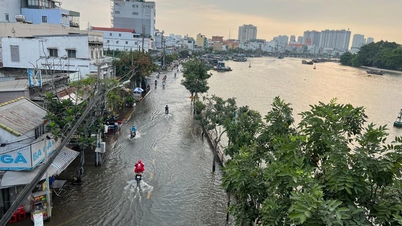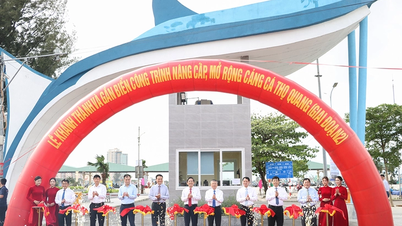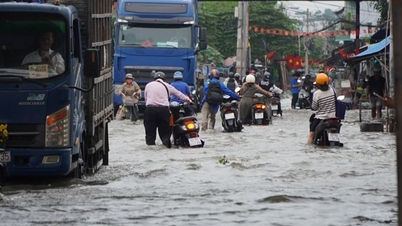Associate Professor Alberto Bernabeo, Senior Head of Aviation at RMIT University Vietnam and a captain with over 10,000 flight hours, emphasizes the importance of passengers fastening their seatbelts while on board, even when the seatbelt sign is off, to ensure safety throughout the flight.
On May 26, a Qatar Airways flight from Doha to Dublin encountered turbulence, injuring 12 passengers and crew members. Five days earlier, a Singapore Airlines flight from London to Singapore was forced to make an emergency landing in Bangkok due to severe turbulence. A 73-year-old British passenger died from a heart attack, and hundreds were injured in the incident.

Assoc. Prof. Dr. Alberto Bernabeo (far left).
Associate Professor Alberto Bernabeo, Senior Head of Aviation at RMIT University Vietnam, has over 10,000 flight hours and is recognized as a captain and flight instructor, having encountered numerous situations involving aircraft turbulence.
“The first thing I learned from my first captain was that as pilots, we need to fasten our seatbelts at both the hips and shoulders. However, passengers only have seatbelts across their hips for various reasons. To all passengers, my advice is simple: Fasten your seatbelt. Keep yourself and your family safe by fastening your seatbelt while on the plane, even when the seatbelt sign has gone off,” said Alberto Bernabeo.
Alberto Bernabeo asserted that seat belts on airplanes help secure passengers in their seats and protect them during critical moments of flight and in turbulent situations. Seat belts are designed to be fastened low and tightly around the hips, not around the abdomen, to effectively prevent injuries and limit the body from being thrown forward.
The captain advised passengers to always pay attention when they hear the seatbelt sign. Pilots are aware of the weather ahead and conditions that could cause turbulence. However, unexpected turbulence, such as clear-air turbulence (CAT), can be a challenge even for experienced pilots.
Changes in weather and climate are causing more extreme weather events worldwide . When Alberto Bernabeo began flying over Europe, the maximum cloud peaks were typically found at altitude 280 (28,000 feet, approximately 8,534 m). Now, clouds are commonly seen at altitude 400 (40,000 feet, approximately 12,192 m) and above, particularly near the equator in the intertropical zone, almost at the top of the troposphere.

Scenes of chaos inside the Boeing 777-300ER that experienced turbulence and made an emergency landing at Suvarnabhumi International Airport in Bangkok, Thailand on May 21. Photo: Reuters.
This is due to the high energy in the lower troposphere, causing extreme phenomena such as thunderstorms caused by cumulonimbus clouds (CBs). These storms affect people on the ground and aircraft in the air. When pilots need to avoid bad weather conditions or concentrated thunderstorm clusters (a series of high-energy cumulonimbus clouds), passengers need to fasten their seatbelts properly, and even hold onto the armrests for safety.
"The theory sounds easy, but the practice can sometimes be difficult. Depending on your flying experience, try to stay as calm and relaxed as possible, and always listen to the flight crew's instructions," said Alberto Bernabeo.
Sometimes, pilots will issue warnings to the entire flight about impending adverse weather conditions. According to Dr. Alberto Bernabeo, unfortunately, many passengers do not pay attention to these warnings, similar to how they frequently use their mobile phones or unbuckle their seatbelts when approaching landing.
The pilot emphasized that mobile phones should not be used unless authorized by the flight crew. There isn't much we can do as passengers until we are safe on the ground and the plane has reached its parking position.

Passengers are advised to fasten their seatbelts throughout the flight (photo: Vietnam+).
In fact, fastening seat belts during a flight is especially important in the aviation process. Before the plane takes off, airline crews always spend about 7-10 minutes instructing passengers on flight safety regulations, including how to fasten their seat belts.
When the plane takes off, the seatbelt sign is always displayed to warn and remind passengers to fasten their seatbelts. Once the plane reaches a stable altitude, the seatbelt sign turns off; however, the chief flight attendant will make an announcement reminding passengers to keep their seatbelts fastened for the duration of the flight unless they need to leave their seats.
During the flight, upon detecting that the aircraft was about to enter an area of bad weather or turbulence, the flight attendants quickly made announcements and requested passengers to remain seated with their seatbelts fastened. The cabin crew continued to advise passengers to check and fasten their seatbelts as the aircraft prepared for landing.
(According to 24h)
Source







![[Photo] Prime Minister Pham Minh Chinh presides over a meeting on private sector economic development.](/_next/image?url=https%3A%2F%2Fvphoto.vietnam.vn%2Fthumb%2F1200x675%2Fvietnam%2Fresource%2FIMAGE%2F2025%2F12%2F20%2F1766237501876_thiet-ke-chua-co-ten-40-png.webp&w=3840&q=75)


























































































Comment (0)